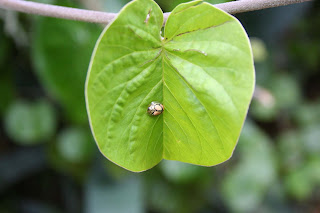
More sooon in Part 2 on climate change issues.
After living and working in Europe for nearly 10 years, I decided to move back to my wonderful, beautiful yet challenging continent Africa. For me where I landed did not matter - it's what I wanted to do that mattered - Giving back to the motherland. So here begins my rediscovery of wonderful Africa and my work as a water expert with a conservation organization.

More sooon in Part 2 on climate change issues.



River Waseges flowing towards Lake Bogoria
Similarly the local communities upstream of this lake are also very dependent of this river for both domestic and agricultural purposes. One thing I should mention is that this river flows almost predominantly through a semi-arid area. This implies that during the peak of the dry season the flows in this river are pretty low. Low to the extent that sometimes the river stops flowing continuously into the lake for several weeks. The result of this has been dry riverbeds (see below) – which of course all things being equal no one would wish for this.

Dry river bed – tributary to River Waseges
In the upstream reaches intensive small scale irrigated agriculture (see below) is practiced and most if not all of these farmers depend on the River Waseges for irrigation.

Small scale irrigated agriculture in the upper Lake Bogoria catchment
In Eastern Africa reliance of communities on land for agriculture, rivers and other natural resources is very high. However, these resources are climate-sensitive and are likely to be affected severely. Under these circumstances of a changing environment – climate change brings yet another complexity.
Where do you draw the line? How much water should be left for the environment and how much should be used for agriculture and domestic purposes? What options are available to best manage the water resources so that we could adapt to the changes that are inevitable?
I will address these rather pertinent questions in detail in the next coming days particularly on how we have managed to try and strike a balance within this catchment area through engagement of local communities.
In the mean time – people and the environment need the rivers to keep flowing – because without this lifeline our very existence ceases to be what we know it.
“We never know the worth of water till the well is dry.” (~Thomas Fuller, Gnomologia, 1732)

Flowing stream